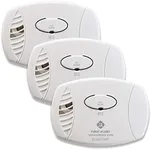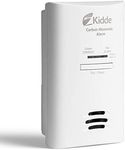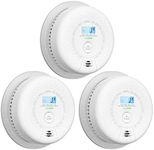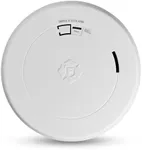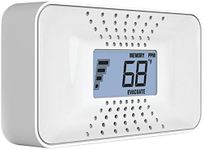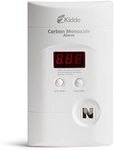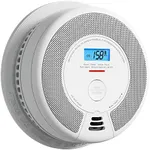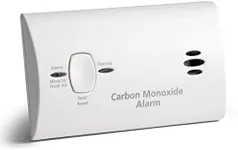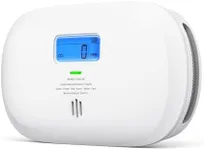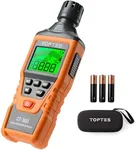Buying Guide for the Best Carbon Monoxide Detectors
Choosing the right carbon monoxide detector is crucial for ensuring the safety of your home and family. Carbon monoxide is a colorless, odorless gas that can be deadly, so having a reliable detector is essential. When selecting a carbon monoxide detector, consider the following key specifications to make an informed decision that best fits your needs.Sensor TypeThe sensor type in a carbon monoxide detector determines how it detects the presence of carbon monoxide. Common sensor types include electrochemical, biomimetic, and metal oxide semiconductor sensors. Electrochemical sensors are highly accurate and respond quickly to CO levels, making them ideal for most homes. Biomimetic sensors mimic the human body's response to CO and are also reliable but may require more frequent replacement. Metal oxide semiconductor sensors are less common but can be effective in certain environments. Choose a sensor type based on the accuracy and reliability you need for your specific situation.
Power SourceCarbon monoxide detectors can be powered by batteries, hardwired into your home's electrical system, or plugged into an outlet. Battery-powered detectors offer flexibility in placement and continue to work during power outages, but require regular battery replacement. Hardwired detectors are more permanent and often come with battery backup, ensuring continuous operation even during power outages. Plug-in detectors are easy to install and can be moved around, but may not work during power outages unless they have battery backup. Consider your home's layout and your preference for maintenance when choosing the power source.
Display and AlertsThe display and alert system of a carbon monoxide detector provide critical information about CO levels and alert you to danger. Some detectors have digital displays that show real-time CO levels, which can be useful for monitoring and understanding the severity of the situation. Others may have simple LED indicators or audible alarms. Look for detectors with loud, clear alarms and consider additional features like voice alerts or smartphone connectivity for remote monitoring. Choose a display and alert system that ensures you can quickly and easily respond to any CO threat.
Installation LocationThe location where you install your carbon monoxide detector can significantly impact its effectiveness. Detectors should be placed near sleeping areas and on every level of your home to ensure comprehensive coverage. Avoid placing detectors too close to fuel-burning appliances, as this can lead to false alarms. Consider models that offer flexibility in installation, such as wall-mounted or ceiling-mounted options. Assess your home's layout and identify key areas where CO exposure is most likely to ensure optimal placement of your detectors.
Additional FeaturesSome carbon monoxide detectors come with additional features that can enhance their functionality and convenience. Features like interconnected alarms, which allow all detectors in your home to sound simultaneously, can provide added safety. Smart detectors that connect to your home automation system or smartphone can offer remote monitoring and alerts. Some models also include combination smoke and CO detection, providing dual protection in a single device. Evaluate which additional features are important to you based on your lifestyle and home setup to choose a detector that offers the best overall protection.
